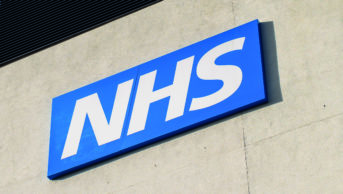
Deymos.HR / Shutterstock.com
Not knowing whether the NHS will foot the bill for new cancer medicines has long been a source of distress for patients. The matter has hindered clinicians, been a dilemma for the government and provided fodder for the press. NHS England’s announcement last week that the Cancer Drugs Fund (CDF) is to receive an additional £160m will offer new hope for some.
The funding boost, £80m per year for the next two years, will bring the total CDF spend to £1.21bn by the time the fund closes in March 2016.
The CDF offers the chance for cancer patients in England to have access to expensive therapies that have not been approved for NHS use by the medicines gatekeeper, the National Institute for Health and Care Excellence (NICE).
It is worth recapping on the CDF’s short but varied history. The scheme was first announced by the government in the summer of 2010. An interim sum of £50m was made available in the lead-up to the fund’s official launch in April 2011. Then £200m per year was committed by the government for a three-year period, after which a system of “value-based pricing” was proposed to take over.
Value-based pricing never eventuated. NICE has been given the job of turning the idea into something workable for all medicines (not just cancer therapies) under the new banner of “value-based assessment”. Meanwhile, the CDF was extended to 2016.
Before the restructure of the NHS in England, CDF funds were devolved to strategic health authorities, which each made decisions on how to spend its allocation regionally. April 2013 saw responsibility for the CDF pass to the fledgling commissioning board NHS England: a subgroup of the clinical reference group (CRG) for chemotherapy decides what to include on a national list of approved CDF medicines.
This has enabled a consistent national approach to the CDF and chemotherapy (and addressed the so-called postcode lottery for cancer medicines so often reported in the media). It remains to be seen whether NHS England will continue to administer the CDF through its four regional area teams, overseen by the chemotherapy CRG.
The CDF can largely be considered a success.
It has offered hope. Most of the medicines and indications are not curative; the drugs are given to prolong survival in advanced or metastatic disease. Options are now available for patients with cancers previously considered untreatable. Some 55,000 patients have received medicines through the CDF to date.
It has allowed clinicians to gain experience in using these new drugs outside of the trial setting and gather real-world data about their risks and benefits.
And it has recognised the need to invest in innovation. The 2010 ‘Innovation, health and wealth’ report made clear that the government needed to do more to facilitate adoption of new health technologies by the NHS. Looking more broadly than cancer therapies, the value-based pricing concept was meant to support this aspiration.
But the fund is not without controversy.
Some of the new medicines funded by the CDF offer limited survival improvements over existing cancer therapies — gains that might be considered marginal by clinicians, and by many patients, even without taking price into account.
The monies invested by the pharmaceutical industry in the development of new therapies must be acknowledged, and companies will be seeking to recoup those costs and make their investment profitable
In addition, the government’s decision to create the CDF has hampered the work of NICE. For medicines to be considered for inclusion on the CDF list, they must first have been assessed and rejected by the institute. The monies invested by the pharmaceutical industry in the development of new therapies must be acknowledged, and companies will be seeking to recoup those costs and make their investment profitable. NICE is concerned with clinical and cost effectiveness. The negotiations between manufacturers and NICE can incorporate patient access schemes — rebate mechanisms that help expensive drugs meet the cost-effectiveness thresholds.
But for drugs available on the CDF, the government is paying big money. This leaves little in the way of leverage for NICE to negotiate with individual companies to get a better deal for the NHS. An example of this is the new formulation trastuzumab emansine (Kadcyla), which costs nearly £75,000 per patient per year. NICE was unable to reach an agreement with the manufacturer Roche to make the drug more affordable. Kadcyla was rejected by NICE and is now available through the CDF at full price.
The news that NHS England is seeking to address some of these issues should be welcomed.
Its chemotherapy CRG is now embarking on a programme to evaluate CDF medicines with a view to removing those proving less effective from the list. It will also look more closely at the price of the medicines being funded through the CDF. It is all sounding a bit like a commissioning process, and one that should involve NICE.
NHS England chief executive Simon Stevens has advocated greater alignment between the CDF and NICE processes. Such a move is essential.
The CDF was overspent by £32m in 2013/2014. The latest funding boost is “new money”, not reallocated from the elsewhere in the NHS pot, The Pharmaceutical Journal has learnt from NHS England. So it will help the national commissioning board to balance its books and meet growing demand for the scheme.
Yet the CDF remains an interim measure in a clinically and ethically challenging area of medicine. The cost of cancer care will continue to rise. NICE value-based assessment must deliver a solution that can cope with the future demands of cancer drug funding beyond the end of March 2016, when the CDF is set to close.
NICE must have input into, and have the opportunity to learn from, the chemotherapy CRG’s next phase of work, to ensure patients continue to have access to innovative therapies but at a price that is sustainable for the health service.


